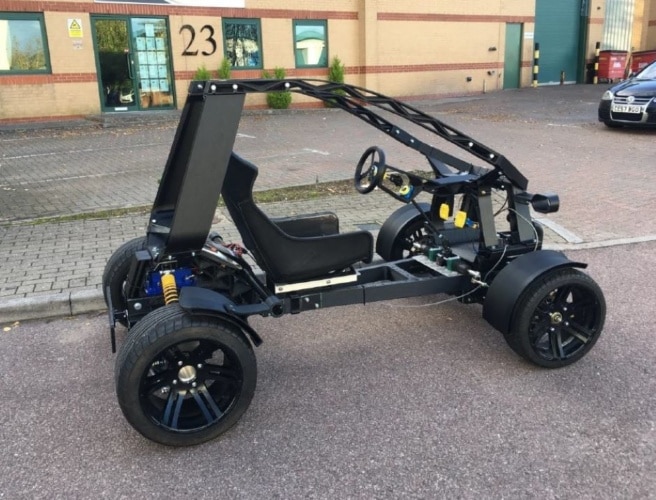One of the pioneers of 3D printed cars, Local Motors may have switched to autonomous buses, but this does not mean that other companies are still not exploring the additive manufacturing of personal cars. The latest is a British company Scaled Ltd, which has launched an electric four-wheel 3D printed car called Chameleon.
For Scaled, Chameleon is a demonstration project designed to show the possibility of using the company’s systems for large-scale additive manufacturing (AM). Founded in 2015, Scaled has a gantry 3D printer and an industrial robot equipped with a thermoplastic extrusion print head. The robotic arm can 3D print objects up to three meters in length.
The design and manufacture of Chameleon took only a few months, and it was designed using Rafinex’s random software, which can optimize the chassis of the vehicle according to various load conditions. The material used to produce the car is Lehvoss Group’s PA6, which is intended to be durable enough for driving.
“Thirty-three percent of the vehicle included a recycled PA6 from a UK firm, Hills Premier Polymers,” said Bob Bradley, Co-founder and Technical Director of Scaled. “In the future, it will definitely be possible to up the number of circular plastics in use for this type of thing – something we are very excited about.”
The non-3D printed components were created with the help of students from the University of Birmingham racing team. The car weighs 150 kilograms, runs on Lynch electric motors, and has a top speed of 45 mph.
You will notice from the pictures that the chameleon lacks many features that may be associated with legal cars on the street and is more like a golf cart. Although this British startup is focused on the automotive sector, its main goal does not seem to be a 3D printed car manufacturer.
If it does go this way, it will have to compete with LM Industries (LMI), the parent company of the local car company, which has more or less abandoned personal 3D printed vehicles to replace its autonomous 3D printing equipment. Shuttle, Ollie. Then there is Divergent 3D / Czinger for the luxury super and supercar market. The most direct competitor is the Italian company XEV, which claims that its small 3D printed electric vehicles can receive up to 30,000 orders.

For the time being, 3D printing of vehicles is still isolated from high-end professional applications, rather than privately owned cars. For Divergent 3D / Czinger, this means an ultra-high performance sports car that only the rich can afford. Otherwise, we will see many motorsports teams using this technology in competitions, and some luxury manufacturers integrate 3D printed terminal parts into their vehicles. For consumers, large brands have been experimenting with small and limited-production 3D printed modules, but it will take some time for cars to be truly equipped with 3D printed chassis. However, the military may find uses faster than consumers.
According to the SmarTech Analysis report “Additive Manufacturing for the Production of Auto Parts – 2019 – 2029”, LMI may mark the main way the public does encounter 3D printed vehicles. The report stated:
“Many application cases show that 3D printing technology will become a key manufacturing process for the production of smart electric fleets in the future. An example is OLLI autonomous driving, 3D printed space shuttles, designed for smart cars in the city center or enclosed company headquarters and business parks. Developed for mobile applications.”
LMI is not the only company to seize this opportunity. The aforementioned Italian manufacturer XEV has promoted “customized corporate vehicles” to companies such as “Italian Post Office”, “Arval Leasing Company”, “Q8 Petroleum Company (Kuwait Petroleum Company)” and “Campello Motors”. Because not everyone can afford LMI’s $1 million large-area additive manufacturing system for Olli, they may actually look to companies such as Scaled for low-cost production.

